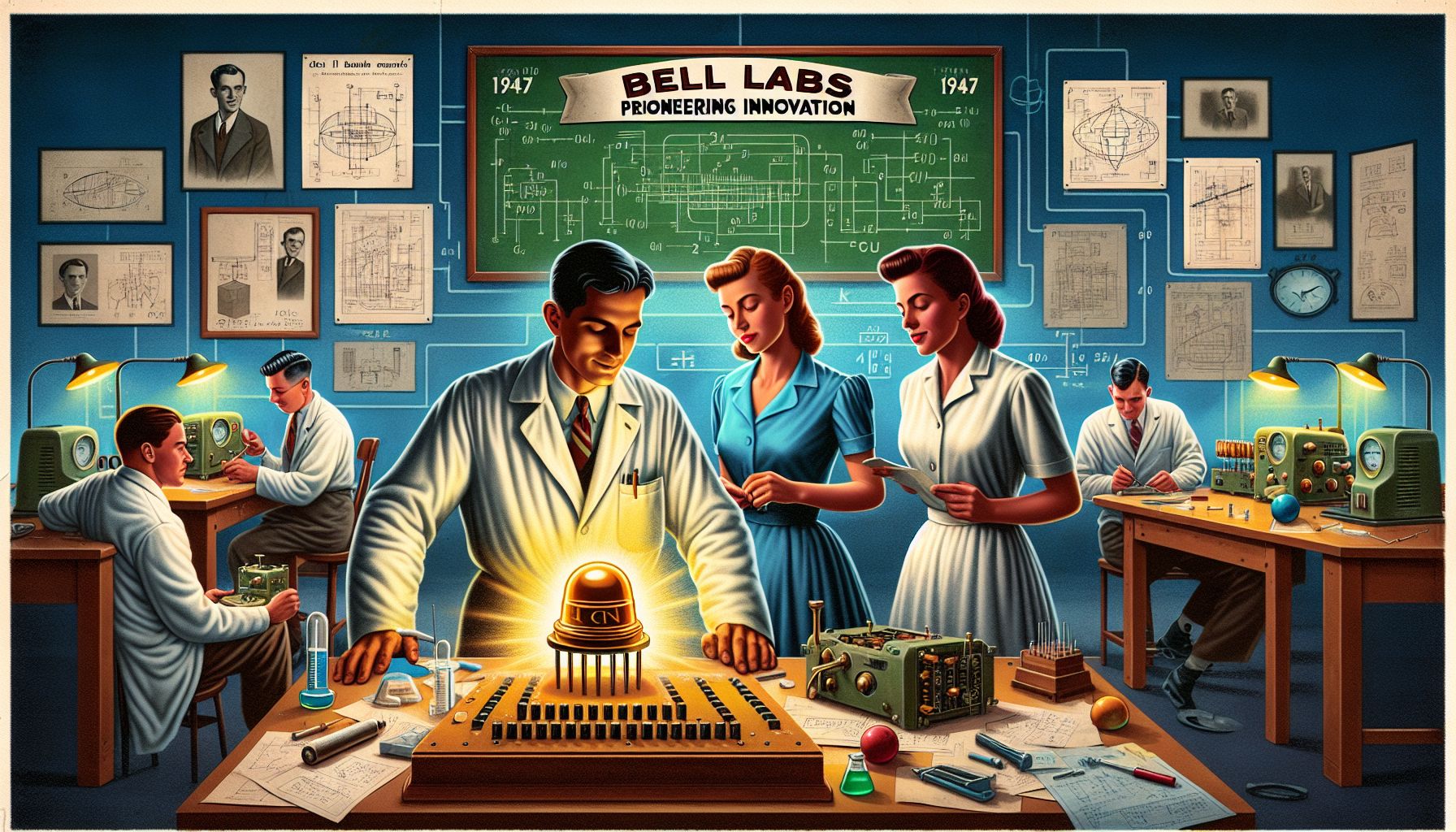📌 Let’s explore the topic in depth and see what insights we can uncover.
⚡ “Can you imagine a world without computers, smartphones or even digital watches? Then imagine a world without the humble transistor, the unassuming hero of modern electronics, born in Bell Labs in 1947.”
In 1947, a technological marvel was born that would change the course of history and the face of electronics forever. A titan of innovation, known as the transistor, came into existence at the Bell Laboratories. This device, small enough to fit in the palm, heralded a new era of miniaturized electronics. Thanks to the transistor, our world today is brimming with fast, cheap, and portable devices, from our omnipresent smartphones to life-saving medical equipment. The invention of the transistor was a defining moment in the history of technology, and it’s worth exploring in depth. In this blog post, we will delve into the fascinating world of Bell Labs and the brilliant minds that brought the transistor to life. This tale is not just about technology, but also about human ingenuity and the spirit of innovation that drives our world forward.
🛠️ The Genesis of the Transistor

Discovering Transistor's Birthplace: Bell Labs, 1947
The story of the transistor begins with the need to improve the technology of the day - the vacuum tube. Vacuum tubes were the workhorses of early electronics, used in radios, televisions, and the first computers. However, they were large, consumed a lot of power, and were prone to overheating and failure. In short, they were not the most reliable or efficient components. In 1945, Bell Labs set up a solid-state physics group, led by the brilliant physicist William Shockley, to find a solution. The team, which included John Bardeen and Walter Brattain, aimed to create a solid-state device that could amplify electrical signals. Their goal was not just to improve existing technology but to spark a revolution.
⚡ The Breakthrough Moment
After two years of relentless experimentation and testing, the team finally had a breakthrough in December 1947. Using a sliver of germanium (a semiconductive material), a small amount of gold, and a wedge-shaped plastic, Bardeen and Brattain invented the first point-contact transistor. This device was a far cry from the bulky, unreliable vacuum tubes it was set to replace. It was small, durable, required minimal power, and above all, it amplified electrical signals, just as the team had hoped. It was a momentous achievement, and the world of electronics would never be the same again.
🏆 The Transistor Takes the World by Storm
News of the transistor’s invention was officially announced on June 30, 1948, and it took the world by storm. The potential of this new technology was immediately recognized, and it was hailed as one of the most significant inventions of the 20th century. In 1956, Shockley, Bardeen, and Brattain were awarded the Nobel Prize in Physics for their groundbreaking work. The transistor quickly found its way into a wide range of applications. The first commercial product to use a transistor was a portable hearing aid, launched in 1952. This was quickly followed by the transistor radio, which became a cultural icon in the 1950s and 1960s. The transistor’s ability to amplify sound made it ideal for these applications. As transistor technology advanced, transistors became smaller and more powerful. This led to the creation of integrated circuits, which are used in virtually all modern electronic devices. From computers and smartphones to cars and spacecraft, the impact of the transistor is all around us.
🔬 The Legacy of Bell Labs
While the transistor is undoubtedly the most famous invention to come out of Bell Labs, it’s far from the only one. Over the years, Bell Labs has been a hotbed of innovation, responsible for many other groundbreaking technologies and scientific discoveries. These include the laser, the UNIX operating system, and the programming languages C and C++, to name just a few. Bell Labs’ culture of innovation and its ability to attract and nurture talent have played a crucial role in its success. The lab has been home to 13 Nobel laureates, and its researchers have contributed to numerous scientific advances.
🧭 Conclusion
The invention of the transistor at Bell Labs in 1947 marked a turning point in the history of technology. It paved the way for the development of the modern digital world and has had a profound impact on nearly every aspect of our lives. The story of the transistor’s invention is a testament to human ingenuity and the power of teamwork. It’s a tale of perseverance, creativity, and the relentless pursuit of knowledge. And, perhaps most importantly, it’s a reminder that when we push the boundaries of what’s possible, we can change the world.
🌐 Thanks for reading — more tech trends coming soon!
